
Još 1960.: zasićen fiktivnim svijetom lik bježi u stvarni svijet kako bi otkrio da je stvarnost nadrealna.
“I'm a walking television show. I can't get away from them. Big Brother is watching me, and Big Dad and Big Mum. The whole family's watching me. I'm like a goldfish in a bowl...”
Dissatisfied with his role in a stereotypical television sitcom, Gurney Slade decides to take matters into his own hands: walking off-set and out into the real world, he meets all sorts of strange and interesting people, animals and inanimate objects, each with a life all of their own. But are Gurney’s experiences real, or are they just in his mind..? - www.clivebanks.co.uk/Gurney%20Slade%20Intro.htm
One of television's genuine oddities, The Strange World of Gurney Slade was a whimsical 'comedy of thought' following one ex- (or so he thinks) actor's meandering journey through a fantasy world. On the back of a burgeoning pop career, Anthony Newley was offered free reign to create of a six-part comedy series in collaboration with comedy scriptwriters Sid Green and Dick Hills (who would later write for Morecambe and Wise). The result, to the bemusement of ATV's Lew Grade, was not a series of pop shows, but an off-beat, stream-of-consciousness comedy.
Unusually, the series was shot on film, marking it out from the largely studio-bound, live, theatrical drama of its time. The first episode sees actor Gurney Slade, in protest against a hackneyed sitcom script, abandoning the studio set for the streets of London. What follows is a fantastical journey unlike anything on television by 1960: Lewis Carroll-style linguistic invention, conversations with dustbins and dances with Hoovers, culminating in Gurney's entering a home to find an average TV viewing family (his former acting colleagues) watching his show.
Gurney Slade displays the irreverence to authority - Gurney witnesses a politician desert his duty for a buxom mistress, and reacts with petty acts of rebellion when bothered by a policeman - that would become the province of the youth movements later in the decade. At the same time, it captured the 1960s' youthful spirit, combining images of everyday contemporary life (London street, and the shortie raincoated Gurney himself) with sped-up fantasy sequences consisting of romps in parks with girls, as well as songs - anticipating The Beatles films A Hard Day's Night and Help! (d. Richard Lester, 1964 and 1965). But the series' most lasting legacy remains its theme tune, written by Max Harris; Newley's contemporaneous cover of 'Strawberry Fair' was also a Top-10 hit.
The series is often described as ahead of its time (although for Lew Grade, this might represent an attempt to excuse its sizeable budget and poor reception), and likened to the surrealist comedy of the late-1960s - notably Monty Python's Flying Circus (1969-74) and Marty Feldman's Marty (1968-69). It also captured the kind of surreal kitsch take on conspiracy drama evoked by The Prisoner (ITV), admittedly more glamorously, in 1967. The first episode provoked enough complaints (and newspaper headlines) to see the series moved from its initial primetime Saturday evening slot to a late night one arguably better suited a younger, more responsive audience.
Catriona Wright
The Strange World of Anthony Newley
“From a certain angle it’s tempting to regard Newley as a rather cheesy showbizzy figure… But look deeper and you’ll discover a genuinely gifted, restlessly creative man who often brought something unexpected into the mainstream.”It’s September 1963. On a dark street, a smartly-dressed young man stands with a panting sheepdog, peering at a tattered advertising hoarding for a TV show. Addressing the figure pictured on the hoarding, the man says, “Well, it was a noble effort, wasn’t it? You tried. I give you that, you tried. But the public is no man’s fool, you know. The public knows what it wants, and you had no right to even try and suggest something different. Anyway, the public doesn’t like anything… suggestive.”
The man nods down towards the sheepdog. “He thinks you were before your time. Personally, I don’t think we’re ever going to reach the time that you’re in.”
The chap in question is writer/singer/performer Anthony Newley, and the picture he’s addressing is of Gurney Slade, the main character from a 1960 TV show played by, um, Anthony Newley. The above speech is the opening to a special trailer shot to mark a repeat showing of The Strange World of Gurney Slade, which was every bit as left-field and idiosyncratic as the show itself.
From a certain angle it’s tempting to regard Newley as a rather cheesy showbizzy figure, all Las Vegas residencies, guest appearances on Miss World and The Royal Variety Performance and Being Married to Joan Collins. But look deeper and you’ll discover a genuinely gifted, restlessly creative man who often brought something unexpected into the mainstream, an admirable inclination of which Gurney Slade is a fine example.
Born in Hackney in 1931, by the age of 17 Newley was already a star, playing the Artful Dodger to Alec Guinness’ Fagin in David Lean’s 1948 film version of Oliver Twist (with an almond up one nostril, he later claimed, in order to subtly misshape his face). By his late 20s, rather than having befallen the standard obscure fate of the child actor, Newley was still starring in a string of hit films, including Idle on Parade and No Time to Die.
Simultaneously, he’d managed to launch a hugely successful singing career. By 1959 he’d notched up 31 consecutive weeks on the British singles charts and become something of a fixture on television entertainment shows such as ITV’s Saturday Spectacular. One of Newley’s sketches for that particular programme, written by comedy kings Sid Green and Dick Hills, seemed to strike a chord for all concerned. It showed Newley making awkward small-talk with other characters, but with his unguarded private thoughts piped in as a voice-over. Perhaps there was something in this, they thought.
The Strange World of Gurney Slade, first broadcast in late 1960, was the end result, written by Hills and Green in close collaboration with Newley, who effectively co-directed the show with credited producer Alan Tarrant. The first episode opens with Newley sitting in a family kitchen setting, failing to engage with the banter of those around him. In fact, it becomes obvious that he’s missing his cues for lines. Eventually, he grabs his coat and, with a smirk and a small shake of his head, he walks off the set – because a set is what it is. He leaves the studio and starts parading around London with his every unspoken thought heard loud and clear by the viewer. Sometimes his thoughtful flights of fancy are seen to intrude into the real world, too.
Just think of it: Newley had just turned 29 at the time and had proven himself to be a very popular, multi-talented light entertainer. Given the chance to have his own TV show, he plumped for something so unconventional that is still feels genuinely left-field almost sixty years later. What young celebrity would do the same today? That opening scene alone is pretty much a perfect deconstruction of the sitcom genre – which, let’s not forget, was still in its infancy at the time. It’s heady stuff, so was Gurney Slade some act of career hara-kiri, or was Newley a genuinely bold, brave creative figure?
Undoubtedly it’s the latter, as everyone involved in the show seems to have had high hopes for it. But it wasn’t to be. Gurney Slade was probably just too out-there for early-evening ITV viewers in 1960, and Newley’s established fan base didn’t take to it. After the first two episodes, it was shunted unceremoniously from prime time – 8.35pm on Saturday night – into a late-night time slot.
In fact, the series falls into two distinctive halves. The first three episodes are filmed on location and play out on suburban streets, an abandoned airfield and a farm. The latter three are studio-bound and see Gurney Slade interacting with a variety of bizarre characters, ultimately having to stand trial for lacking a sense of humour. The studio episodes are more self-conscious and not quite so satisfying, but they’re never less than unique. At times, it’s far closer to pure stream of consciousness than to your standard TV comedy show. Perhaps the closest frame of reference would be a leading light entertainer experiencing his own personal take on Alice’s Adventures in Wonderland. In truth, the show does teeter right on the brink of being self-indulgent nonsense, but it never quite oversteps the mark, and in fact that high-wire act is a large part of its audacious charm. read more
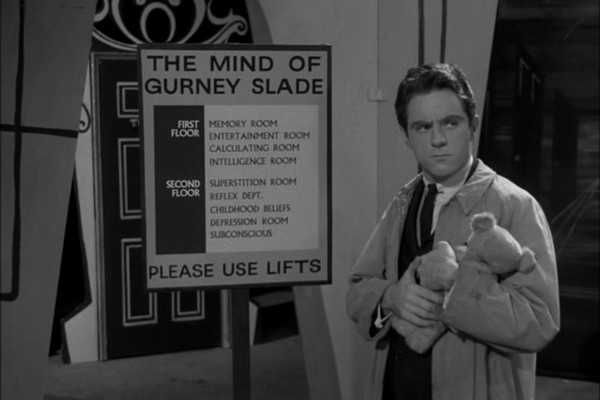
6 Episode Five
"It's wonderful to be out of my mind again."
The phrase "worst to best" doesn't really apply with Gurney Slade, as there's not really a "worst" episode in the run. This one sees the programme converted into a mock-ironic children's programme, with the show's tradition of Newley miming a piano to start off the catchy theme tune (something absent altogether in the third episode) here begun by one of the kids. The final three episodes of Gurney Slade are pointedly different to the first half of the series, in that they're all shot in a studio, and are all overtly humorous in a way the first three aren't. Characters like Bernie Winters as "Albert" are recognisable attempts to make an audience smile, in a way that the quirky, offbeat and meandering narratives of the first three don't aspire to.
While still some of the more unique television episodes covered on this site, and even more metatextual, the last three tap more into the recognisable television lexicon, rather than the truly offbeat tales of where it all began. The episode concludes with a trip inside Gurney Slade's mind... while concepts like the "Depression Room" might be played more broadly for laughs than they would be today, you've got to love a series that has the star watch himself performing his top three hit of that year and musing "Funny... I always had the impression that I sang better than that."
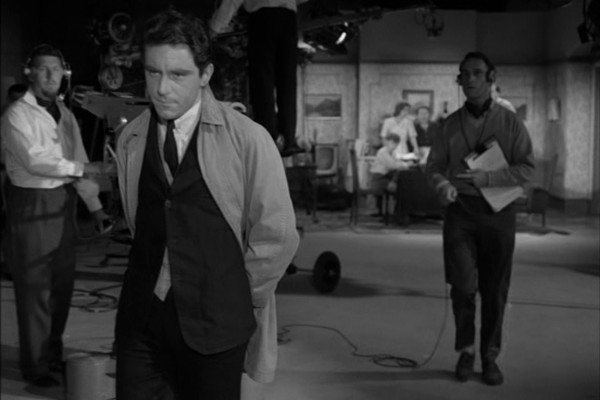
The phrase "worst to best" doesn't really apply with Gurney Slade, as there's not really a "worst" episode in the run. This one sees the programme converted into a mock-ironic children's programme, with the show's tradition of Newley miming a piano to start off the catchy theme tune (something absent altogether in the third episode) here begun by one of the kids. The final three episodes of Gurney Slade are pointedly different to the first half of the series, in that they're all shot in a studio, and are all overtly humorous in a way the first three aren't. Characters like Bernie Winters as "Albert" are recognisable attempts to make an audience smile, in a way that the quirky, offbeat and meandering narratives of the first three don't aspire to.
While still some of the more unique television episodes covered on this site, and even more metatextual, the last three tap more into the recognisable television lexicon, rather than the truly offbeat tales of where it all began. The episode concludes with a trip inside Gurney Slade's mind... while concepts like the "Depression Room" might be played more broadly for laughs than they would be today, you've got to love a series that has the star watch himself performing his top three hit of that year and musing "Funny... I always had the impression that I sang better than that."

5 Episode One
"The golden years of British entertainment! So much for Shakespeare and Sophocles."
The first episode of the series was the only one to get a repeat outside of the 60s, appearing in Channel 4's 1992 series Television Heaven. The opening four minutes, where Gurney walks off the sitcom set and into real life are excellent, as are the final moments where he realises he can't escape from the cameras. Yet what takes place in between is less substantial than what came after, the episode as a whole being light in content. Although over 12 million tuned in to see a successful singer and film star appear in his own television comedy, almost 4 million deserted the show the following week, causing ITV to pull it from the prime time schedule. As an opening episode of Gurney Slade, then it's a good one, albeit not a great one; an episode that requires the suggestion to "stick with it".
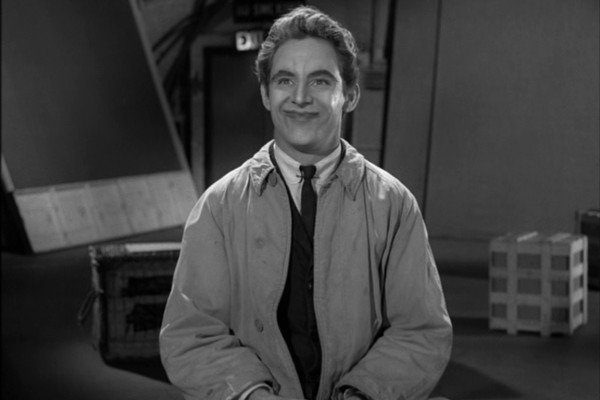
The first episode of the series was the only one to get a repeat outside of the 60s, appearing in Channel 4's 1992 series Television Heaven. The opening four minutes, where Gurney walks off the sitcom set and into real life are excellent, as are the final moments where he realises he can't escape from the cameras. Yet what takes place in between is less substantial than what came after, the episode as a whole being light in content. Although over 12 million tuned in to see a successful singer and film star appear in his own television comedy, almost 4 million deserted the show the following week, causing ITV to pull it from the prime time schedule. As an opening episode of Gurney Slade, then it's a good one, albeit not a great one; an episode that requires the suggestion to "stick with it".

4 Episode Six
"They'll all live again, but for me, this is the finish."
In an age where it's almost impossible to find a television programme that doesn't practise self-reflexivity, it's important to remember that Gurney Slade aired over half a century ago. The influence from Six Characters in Search of an Author is felt here, though is met with charming reactions from the characters Slade has created throughout the series. Perhaps the most rewarding is from Anneke Wills who, upon learning that he'd imagined her as an "18 or 19" year-old girl, decides that "I think you're a little too old for me." The final ending is a little saddening, as Gurney expresses his wish to do a second series, only to turn into a lifeless ventriloquist's dummy under the gaze of the real Anthony Newley.
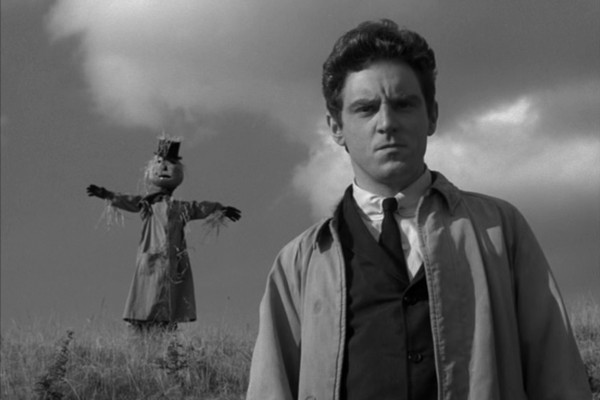
In an age where it's almost impossible to find a television programme that doesn't practise self-reflexivity, it's important to remember that Gurney Slade aired over half a century ago. The influence from Six Characters in Search of an Author is felt here, though is met with charming reactions from the characters Slade has created throughout the series. Perhaps the most rewarding is from Anneke Wills who, upon learning that he'd imagined her as an "18 or 19" year-old girl, decides that "I think you're a little too old for me." The final ending is a little saddening, as Gurney expresses his wish to do a second series, only to turn into a lifeless ventriloquist's dummy under the gaze of the real Anthony Newley.

3 Episode Three
"Well, there's a job vacant... if you want it."
While plaudits directed towards the series invariably include "ahead of its time", it must also be acknowledged that it was of its time, too. There's no show on television today that would open with a near four-minute monologue about ants, the star looking idly through grass as he delivers it. Whether this is a good or bad thing is open to personal taste, and Gurney Slade isn't a series that prides itself on excess incident; many of the episodes are sparse in terms of pure content, and episode three is the gentlest of them all.
Beautifully directed by Newley and Alan Tarrant, the film stock here is so well preserved that the DVD looks as if it was made yesterday, Newley wandering through the countryside talking to animals like some kind of existential Johnny Morris. Highlights here include Newley performing a duet of Greensleeves with a scarecrow, the use of ants to make subtle commentaries on the state of post-war Britain and, most macabre of all, the farmer's wife and hired hand who plot to murder the farmer, almost unnoticed by Newley until it's too late. It's this subversive, sinister undercurrent that makes the third episode rank so high in this list.
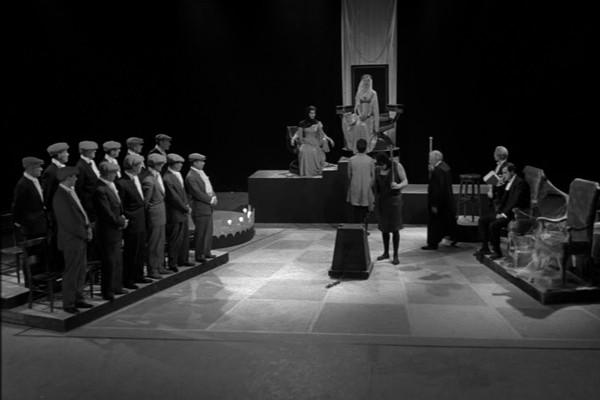
While plaudits directed towards the series invariably include "ahead of its time", it must also be acknowledged that it was of its time, too. There's no show on television today that would open with a near four-minute monologue about ants, the star looking idly through grass as he delivers it. Whether this is a good or bad thing is open to personal taste, and Gurney Slade isn't a series that prides itself on excess incident; many of the episodes are sparse in terms of pure content, and episode three is the gentlest of them all.
Beautifully directed by Newley and Alan Tarrant, the film stock here is so well preserved that the DVD looks as if it was made yesterday, Newley wandering through the countryside talking to animals like some kind of existential Johnny Morris. Highlights here include Newley performing a duet of Greensleeves with a scarecrow, the use of ants to make subtle commentaries on the state of post-war Britain and, most macabre of all, the farmer's wife and hired hand who plot to murder the farmer, almost unnoticed by Newley until it's too late. It's this subversive, sinister undercurrent that makes the third episode rank so high in this list.

2 Episode Four
"Not funny... clever."
The episode where the series stops and deconstructs itself, Gurney placed on trial for making a programme and "They didn't think it was very funny". What makes this episode so astonishing (along with the promo commercials for the series) is that it accurately predicts the audience response to the programme in which they appear. It's almost impossible to believe that the makers of the series were so prescient they were able to project the bewilderment and resentment of the viewing public before the show even aired.
At this point in the series, it had already been pushed off prime time Saturday night and thrown into a late night slot. Curiosity over the programme saw a repeat in 1963, but it's one that's generally fallen into obscurity, a series that wasn't appreciated by a mainstream audience in a time when niche programming schedules didn't exist. Although critically acclaimed and influential, it's widely forgotten, and episodes like this one uncannily depict why.
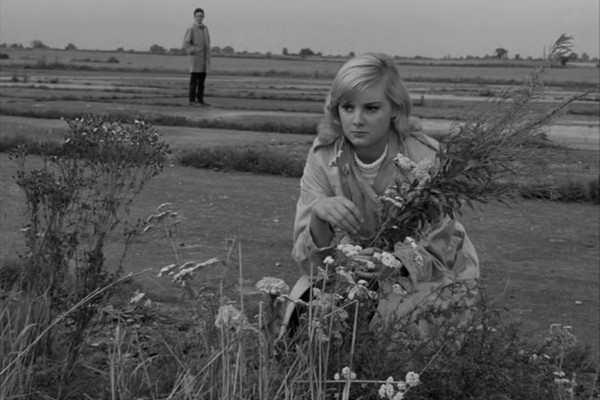
The episode where the series stops and deconstructs itself, Gurney placed on trial for making a programme and "They didn't think it was very funny". What makes this episode so astonishing (along with the promo commercials for the series) is that it accurately predicts the audience response to the programme in which they appear. It's almost impossible to believe that the makers of the series were so prescient they were able to project the bewilderment and resentment of the viewing public before the show even aired.
At this point in the series, it had already been pushed off prime time Saturday night and thrown into a late night slot. Curiosity over the programme saw a repeat in 1963, but it's one that's generally fallen into obscurity, a series that wasn't appreciated by a mainstream audience in a time when niche programming schedules didn't exist. Although critically acclaimed and influential, it's widely forgotten, and episodes like this one uncannily depict why.

1 Episode Two
"Personally I think most people marry the first one that happens to be around."
It's tempting to read too strongly into ficticious programmes and assume that the makers are expressing their own fears on screen, and it must be acknowledged that, while Gurney Slade was Newley's idea, Dick Hills and Sid Green were the credited writers. However, if you were going to psychoanalyse an episode of Gurney Slade, this would be the one. The first episode to feature Anneke Wills (best known as Polly from Doctor Who, and credited here as Annika), Newley began an affair with her after she appeared in the programme, moving in with her while still married to his first of four wives. It's unlikely to be a coincidence that 'Gurney Slade' wears a band on his left ring finger throughout the series, which is transferred to his little finger for just this episode.
There's much here to support claims Newley had a large part to play in the creation of the Slade character and the series: from the gravestone to lost love, to Gurney wandering the streets, encouraging a man to leave his wife and then taking away his three children. Events lead to an almost sinister conclusion, as a fairy grants Gurney a wish... a wish that turns out to be a deserted wasteland full of dismembered limbs and body parts of female shop dummies, Gurney lamenting that they're not "live ones". He encourages the children to assemble their perfect mother from the parts, before it comes to life and takes the children back. One slight detraction of the programme is the lack of continuity between shots. Look at the scene where Newley meets the fairy in the woods, one hand raised up as he speaks to the fairy, both hands on the pram for the reverse shots. It's a small but notable distraction in an otherwise well-made series.
- http://www.anorakzone.com/gurneysladerank.htmlIt's tempting to read too strongly into ficticious programmes and assume that the makers are expressing their own fears on screen, and it must be acknowledged that, while Gurney Slade was Newley's idea, Dick Hills and Sid Green were the credited writers. However, if you were going to psychoanalyse an episode of Gurney Slade, this would be the one. The first episode to feature Anneke Wills (best known as Polly from Doctor Who, and credited here as Annika), Newley began an affair with her after she appeared in the programme, moving in with her while still married to his first of four wives. It's unlikely to be a coincidence that 'Gurney Slade' wears a band on his left ring finger throughout the series, which is transferred to his little finger for just this episode.
There's much here to support claims Newley had a large part to play in the creation of the Slade character and the series: from the gravestone to lost love, to Gurney wandering the streets, encouraging a man to leave his wife and then taking away his three children. Events lead to an almost sinister conclusion, as a fairy grants Gurney a wish... a wish that turns out to be a deserted wasteland full of dismembered limbs and body parts of female shop dummies, Gurney lamenting that they're not "live ones". He encourages the children to assemble their perfect mother from the parts, before it comes to life and takes the children back. One slight detraction of the programme is the lack of continuity between shots. Look at the scene where Newley meets the fairy in the woods, one hand raised up as he speaks to the fairy, both hands on the pram for the reverse shots. It's a small but notable distraction in an otherwise well-made series.
Nema komentara:
Objavi komentar